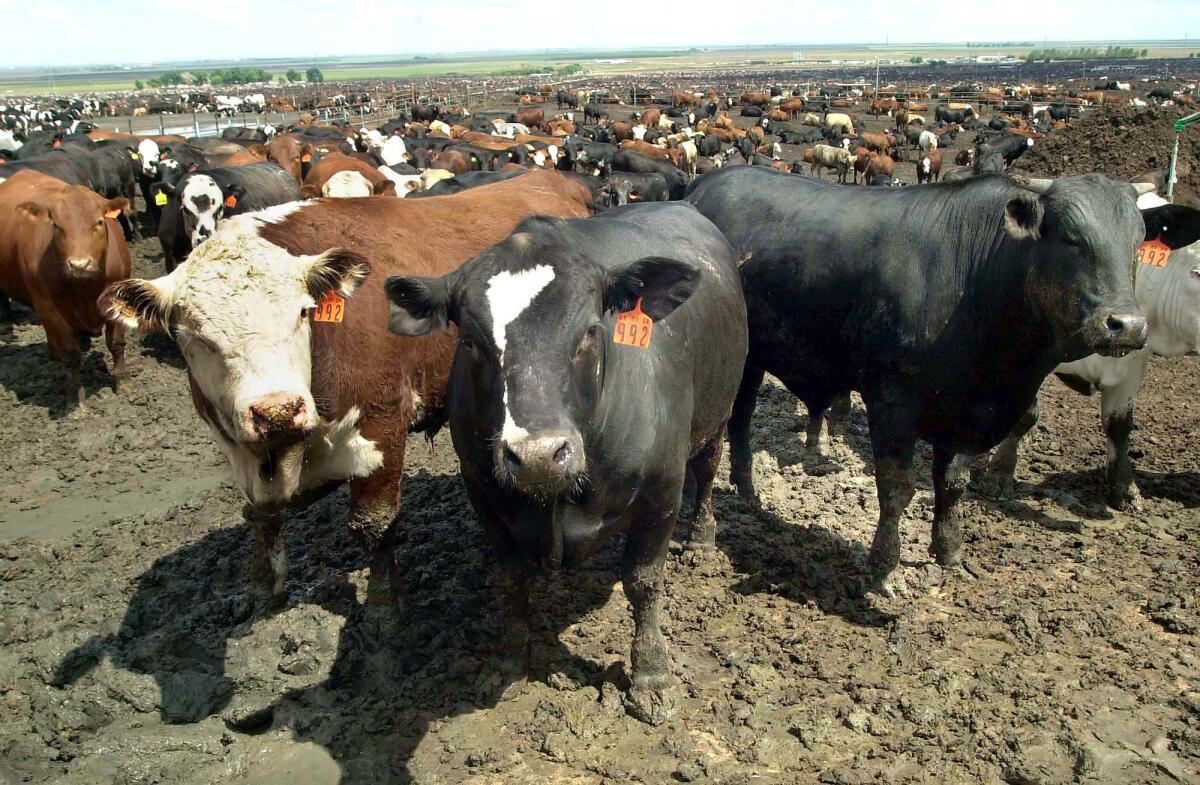FDA plan to reduce antibiotic use in meat is a major step

- Share via
Make no mistake about it, the Food and Drug Administration’s decision Wednesday to encourage reductions in the use of antibiotics in livestock production is a very big deal.
Granted, it doesn’t go as far as many advocates would prefer -- it relies on voluntary measures by the drug and livestock industries -- but it is an important first step in a debate that has been too long stalled.
In case you missed Thursday morning’s article by my colleague David Pierson, at issue is what is known as sub-therapeutic dosing of antibiotics to otherwise healthy animals. The practice, for reasons that are not clear, results in faster weight gain for those animals, meaning they can be butchered earlier with much less money spent on feed.
Although that means cheaper meat for all of us, it comes at a cost -- some of the antibiotics used are also prescribed for sick humans. As bacteria evolve to develop resistance to these antibiotics, they can pose serious threats to our health.
RECIPES: The California Cookbook, a stunning database of holiday favorites
More than 2 million people in the U.S. now contract drug-resistant infections annually, resulting in 23,000 deaths, according to the U.S. Centers for Disease Control and Prevention. A recent salmonella outbreak at Foster Farms was made more severe because the bacteria were antibiotic-resistance, resulting in an estimated 40% of the victims being hospitalized.
The FDA’s plan would require drug manufacturers to stop listing certain antibiotics as effective in promoting animal growth and would require farmers to get prescriptions from veterinarians for any antibiotic use -- to ensure that the drugs were being used only on animals that needed them.
The meat industry has long resisted any efforts to curb antibiotic use because the costs could be enormous. According to a 2001 study by Department of Agriculture economists, cutting out sub-therapeutic antibiotic use in pork production in 1999 would have resulted in an increase of $63 million in feed costs to farmers. Because margins are already low, that would have resulted in an industry-wide loss of more than $45 million that year, which would certainly mean higher meat prices for all of us.
The study also found that “the greatest gains in productivity are thought to be on operations that would otherwise be less productive because of less than ideal environmental and management conditions.” One theory as to why these antibiotics work is that they cut down on minor illnesses that could result from unsanitary growing conditions.
But the tide on the issue has been turning. Industry groups the American Meat Institute, the National Pork Producers Council and the National Chicken Council have come out in favor of the FDA’s proposal. Poultry producers Foster Farms, Perdue Farms and Tyson Foods said recently that they will greatly reduce their use of sub-therapeutic antibiotics. And McDonald’s, Wendy’s and Popeye’s are refusing to buy chicken that has been treated with certain antibiotics.
ALSO:
Deepak Chopra coming to town for book signing
Finding gluten-free versions of favorite Jewish foods
San Francisco’s Tosca Cafe gets celebrity chef makeover
More to Read
Eat your way across L.A.
Get our weekly Tasting Notes newsletter for reviews, news and more.
You may occasionally receive promotional content from the Los Angeles Times.









